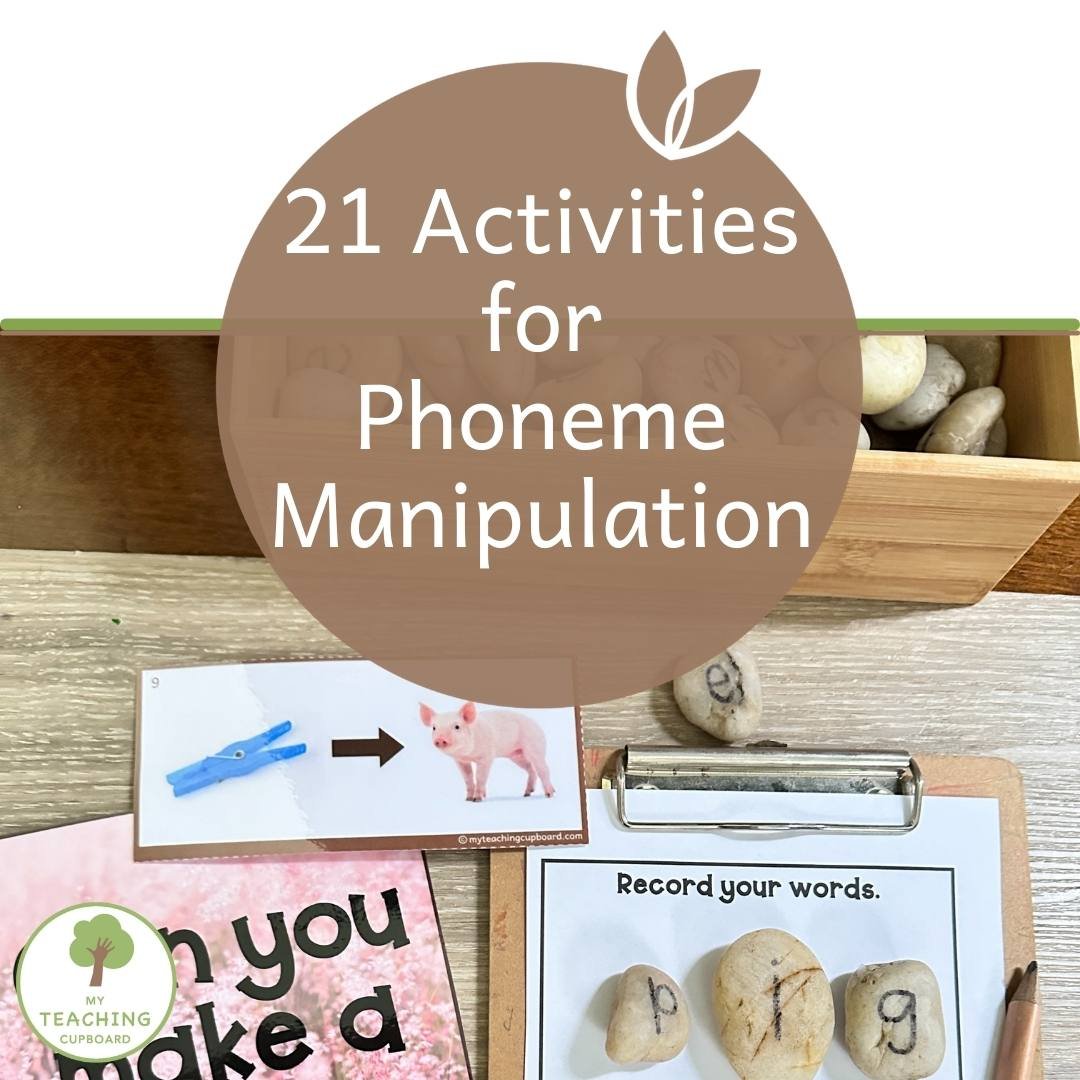
Examples of Phoneme Manipulation:
The following are random samples of the three different types of phoneme manipulation. You can alter within each type the particular phoneme you are manipulating.
Phoneme Addition:
- Initial phoneme: When we take the word ice and add /n/ at the beginning we have the word: nice.
- Final phoneme: To the word win add /d/ to the end to get the word: wind.
- A consonant blend with a phoneme addition. Begin with the word fat, and add /l/ after /f/, to obtain the word flat.
Phoneme Deletion:
The first phoneme: In the word flake, remove the sound of /f/, you have the word lake.
Final phoneme: In Another word belt, removing the phoneme /t/ then you will be left with a word bell.
Removal of the second phoneme of a consonant blend. In the word stick /t/ is dropped to give the word sick.
Phoneme Substitution:
First phoneme, in the word rat, change the / r / to a /b / and you get to have the word bat.
Final phoneme In the word pin, replace the /n/ in the word with that of /k/ to have the word pick.
Medial phoneme: In the word hut, change the /u/ to an /o/ and you will get the word hot.
To be able to fulfil the unique requirements of your students, you can make these skills sets more or less demanding accordingly
Phoneme manipulation can also evolve from simple to more complex words. Students begin with two- or three-sound words (e.g., VC or CVC words) and gradually move on to words with digraphs, blends, r-controlled vowels, etc.
You might have many students ready to work on phoneme manipulation, but you will probably need to differentiate the types of words you use.
Most children master advanced techniques by the end of grade three.
Why Are Phoneme Manipulation Skills Important?
When children understand phoneme manipulation, they will have advanced phonemic awareness. They’ll be able to pick up on sound patterns and be better equipped to learn how to decode words and phonetically write words.
Phoneme Manipulation and the Science of Reading:
As we have already discussed, phoneme manipulation is a crucial skill within phonological awareness and is directly tied to a child’s ability to read and write effectively.
Research indicates that being able to hear, identify, and alter phonemes (the smallest units of sound in speech), is foundational to literacy development.
Here’s what the research says:
The best predictor of reading difficulty in kindergarten or first grade is the inability to segment words and syllables into constituent sound units (phonemic awareness). (Lyon, 1995)
The ability to hear and manipulate phonemes plays a causal role in the acquisition of beginning reading skills. (Smith, Simmons, & Kame’enui, 1998)
The effects of training phonological awareness and learning to read are mutually supportive. “Reading and phonemic awareness are mutually reinforcing: Phonemic awareness is necessary for reading, and reading, in turn, improves phonemic awareness still further.” (Shaywitz, 2003)
Research Insights:
There’s comprehensive research suggesting phoneme manipulation is a pre-requisite to blending and segmenting and also a predictor of word-level reading proficiency.
However, there is some evidence to suggest that deletion and manipulation of phonemes are skills that develop as a result of learning to read and so can be seen as mutually advantageous to reading skills rather than prerequisites.
Some children find deletion and manipulation of sounds easier when they use manipulation like letter tiles. This supports the research showing that phonemic awareness training is most effective when combined with phonics.
It is unquestionable that the concentration in the field of exercises that enhance the functioning of phoneme manipulation strengthens the basis of the adequate reading. Practice and gradual tiering of difficulties will produce the best outcomes in terms of literacy of your students.
